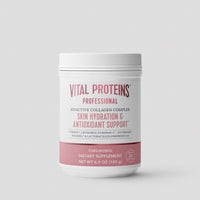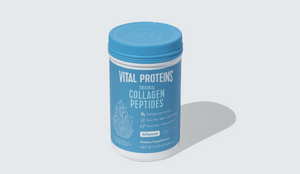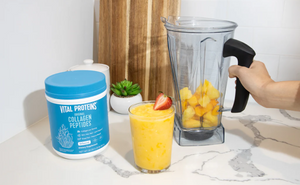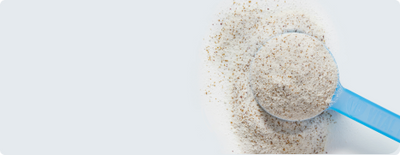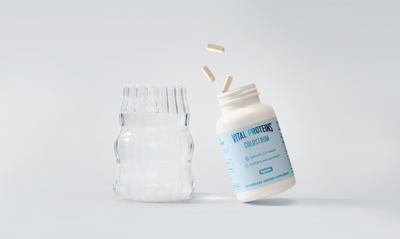Most of what we know about our hair structure is surface level. We know how to transform hair to its prettiest using the right products, hair tools and other trendy accessories of the moment. But there's also another side to hair — a scientific side. Your hair structure goes deeper than what you see in the mirror. Learning about this is key to better understanding your hair type (and can help ward off future bad hair days).
Ready for a lesson on hair anatomy? Here, the experts share everything you need to know to get well acquainted with your own hair structure.
How do you know your hair structure?
While you might assume you can tell your hair structure just by looking at it, what it actually refers to is the thickness of the strands, explains Alain Michon, M.D., Medical Director at the Project Skin MD Ottawa.
Hair structure falls into three main categories:
- Fine: This hair structure (also referred to as thin) is the most sensitive to any procedures. While the strands are easy to curl and dye, they can also easily lose their integrity, says Nikki Goddard, certified hairstylist and makeup artist with an associate's degree in cosmetology. In terms of touch, it’s hard to feel between your fingers, adds Monica Davis, Founder and Editor-in-Chief of MyStraightener.
- Thick: This is considered the strongest hair type, as the strands are very resistant to various types of chemical damage. But there are downsides, too. For example, it’s very difficult to do permanent hairstyles or bleach thick hair.
- Medium: This is the most common hair group. It's actually the standard against which the other two types are determined. You'll be able to feel its thicker texture quite easily to the touch, but it won’t feel coarse, adds Davis.
The best way to determine your hair structure is through a strand test. It's pretty simple: Pull out a strand of hair from your brush or comb and compare it to a stitching thread. Place your hair and the thread side by side. Hair thinner than the thread is an indicator of thin hair, the same thickness means you have medium hair, and if the strand is thicker than the thread, your hair can be classified as thick, Michon tells Lively.
You can also test by grabbing a handful of hair and looking at your scalp. The more of the scalp you see, the lower the density your hair is and vice versa, says Davis.
Another option is a stretch test. "Take a single hair and stretch it slowly. Healthy hair stretches up to 50 percent," Davis tells Lively.
"If it breaks at 5 to 15 percent, the elasticity is very low and you need strengthening treatment."
Related Articles
What is the basic structure of the hair?
Hair anatomy 101 starts with the base structure of the hair — it's composed of the hair bulb and the hair shaft.
"The hair that we see on the surface is a hair shaft, which is a keratin filled product of hair follicle," explains Jyoti Gupta, M.D., consultant dermatologist and hair transplant surgeon.
The basic structure of hair is made of keratin and protein, says Kasey Bertucci and Taylor Portanova, master hair stylists and Co-Owners of Salon 120 West.
"The hair follicle portion is situated beneath the surface and is divided into two parts," says Gupta. "The upper part has infundibulum and isthmus, the lower part has hair bulb and suprabulbar part. The upper part is always constant and has oil glands."
As if that wasn't scientific enough, it's the lower part of the hair follicle that has stem cells, Gupta adds. You'll notice the bulb if you were to pull a hair strand from the root.
What are the 3 layers of the hair?
To really understand hair structure, you need to break it down to the layers, which include the medulla, cortex and the cuticle. Here's a deeper look at all three:
- Medulla: This is the soft, innermost layer of hair that consists of an oily substance, explains Goddard. And, it's typically only present in thick hair, says Michon.
- Cortex: The cortex layer is what provides color, texture, moisture and strength to hair, says Gupta. The cortex and cuticle layers are closely connected. The health of the cortex depends on the state of the cuticle protecting it, says Goddard.
- Cuticle: The cuticle is the hair's outer layer that contains cells that prevent damage to the hair’s inner structure, says Michon. It's imperative to keep this layer healthy. A healthy cuticle is usually flat and moderately hydrated. Damage to the cuticle results in dryness and brittleness, says Goddard.

How can I thicken my hair?
The truth is, not everyone is blessed with thick hair. So, many hair experts have clients curious about ways they can thicken their hair. While it’s not easy to change the hair structure you were born with, there are some things you can do to plump up fine strands.
Eat a healthy diet.
Thick hair starts from the inside out. This is why Gupta recommends a diet that is rich in nutrients including vitamin B12, iron, zinc, folic acid and biotin. You can get these nutrients from foods such as proteins, healthy fatsfrom fish, eggs, nuts, Greek yogurt and beans, Davis says.
Use volumizing hair products.
Sometimes, you have to fake it ‘till you make it. Jamila Powell, Owner of Naturally Drenched, recommends volumizing shampoos and texturizing powders or spray to give the hair a boost in volume. Before buying, Michon recommends doing your research on the right volume-boosting products since different hair types require specific products to help maintain and boost hair thickness. Sulfate-free shampoos, for instance, are recommended for all hair types.
Avoid heat and tight hairstyles.
Since heat and over-manipulation are often culprits of hair loss and breakage, Powell recommends keeping your hairstyles simple whenever possible. "In order to have thicker hair, you want to avoid high-tension hairstyles, heat and any look that requires over-manipulation," she explains.
You can even make the hair appear thicker by an easy style change — mixing up your part. "By simply moving the parting and laying your strands differently, you can add volume."
Take a collagen supplement.
Both Bertucci and Portanova suggest taking a collagen supplement for clients who are trying to increase the volume of their hair. This is where Vital Proteins® collagen products come in. Try Vital Proteins Beauty Collagen® ($25; shop now on vitalproteins.com), which contains ingredients including collagen peptides, hyaluronic acid and probiotics to help support hair, skin and nails.**
Take good care of the scalp.
Good hair care specific to your hair structure starts at the scalp. You can use scalp scrubs and shampoos that remove all dirt and sebum (waxy oils produced by glands in the body). Goddard recommends a deep cleaning once a week, depending on hair type to keep strands healthy.





